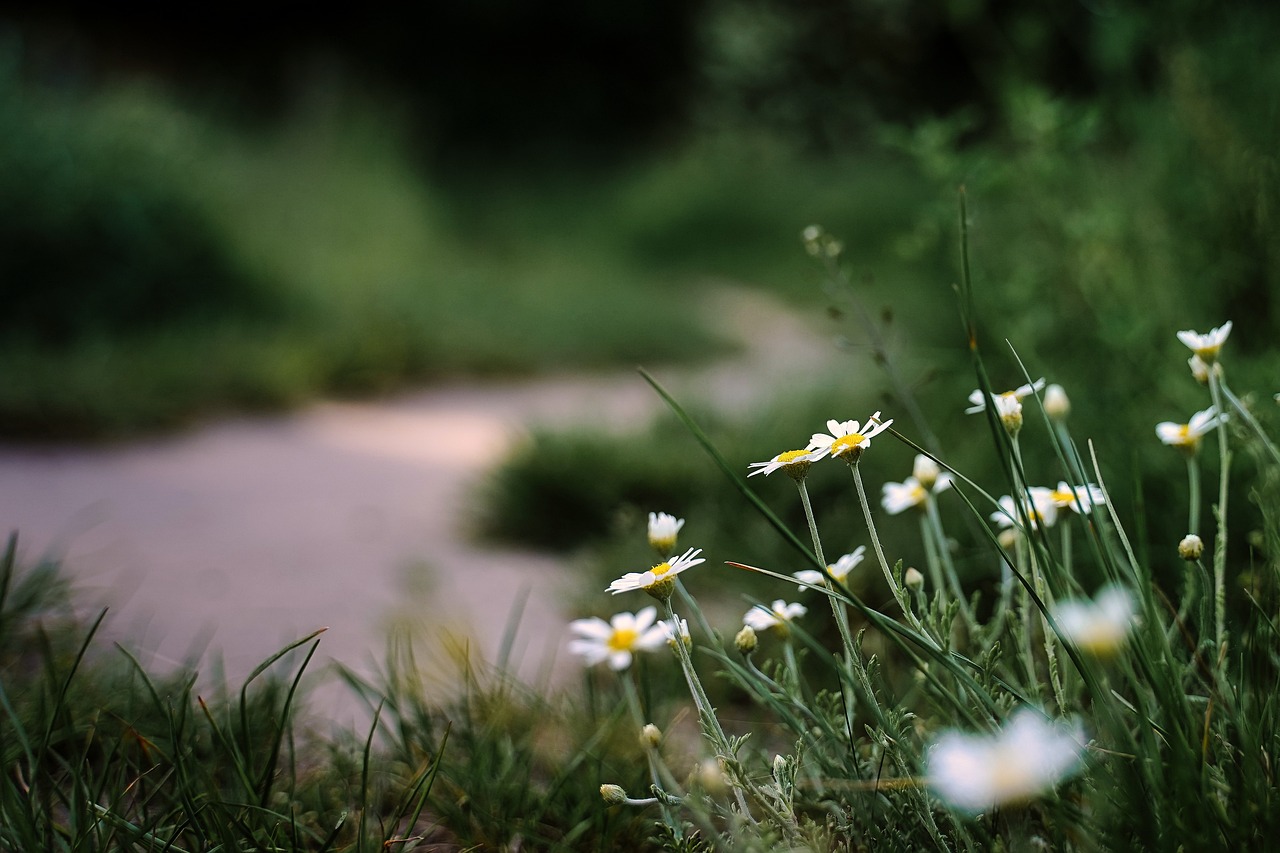How to Create a Beautiful Garden Path
Creating a beautiful garden path is not just about functionality; it's also an opportunity to enhance the aesthetic appeal of your outdoor space. By choosing the right materials, designing a well-thought-out layout, and incorporating landscaping elements, you can transform a simple path into a stunning focal point in your garden.
When it comes to selecting the material for your garden path, options abound. From the rustic charm of gravel to the timeless elegance of flagstone, each material brings its unique characteristics to the table. Consider factors like durability, aesthetics, and maintenance requirements to pick the perfect match for your garden.
Designing the layout of your garden path is where creativity meets practicality. Think about the path's shape, width, curves, and how it aligns with the overall design of your garden. A well-planned layout can create a sense of harmony and flow, guiding visitors through your outdoor oasis.
Integrating landscaping elements along the garden path can elevate its visual appeal. Planting colorful flowers, lush shrubs, or ornamental grasses along the edges can add texture, color, and a touch of whimsy to the path. These elements not only beautify the path but also create a seamless transition between the path and the surrounding garden.
Adding lighting features to your garden path not only enhances its ambiance but also ensures safe navigation after dark. Solar-powered lights, lanterns, or string lights can create a magical atmosphere, making evening strolls in the garden a delightful experience. Illuminate your path and let it shine even when the sun goes down.
Creating defined edging and borders for your garden path gives it a polished and structured look. Using materials like stones, bricks, or even plants can help delineate the path and prevent it from blending into the surrounding landscape. These borders not only enhance the path's aesthetics but also make maintenance easier.
Proper drainage is essential for the longevity of your garden path. Prevent water accumulation and erosion by installing drainage systems such as gravel beds or French drains. Ensuring good drainage not only protects the path from damage but also maintains its pristine appearance over time.
Maintaining your garden path is key to preserving its beauty and functionality. Regular upkeep, including weeding, sweeping, and power washing, can keep the path looking fresh and inviting. Address any damages promptly to prevent them from escalating and compromising the overall appeal of the path.
Personalizing your garden path with decorative accents is where you can truly make it your own. Adding sculptures, stepping stones, or intricate mosaic patterns can infuse character and charm into the design. Let your creativity shine through these personal touches and create a path that reflects your unique style.

Choosing the Right Material
When it comes to creating a beautiful garden path, one of the most crucial decisions you'll make is choosing the right material. The material you select will not only impact the path's aesthetics but also its durability and maintenance requirements. There are several options available, each with its own unique characteristics and considerations.
Gravel is a popular choice for garden paths due to its affordability and ease of installation. It provides a charming, rustic look and allows for good drainage. However, gravel paths may require periodic replenishing and can be less stable underfoot compared to solid materials.
Flagstone is another excellent option known for its natural beauty and durability. This flat, irregular stone can create a timeless and elegant path that blends seamlessly with the surrounding landscape. While flagstone paths are relatively low maintenance, the stones can shift over time, requiring occasional adjustments.
Brick paths offer a classic and refined appearance that complements traditional and formal gardens. Bricks are durable and easy to replace if damaged, making them a practical choice for high-traffic areas. Keep in mind that brick paths may require regular cleaning to prevent moss or weed growth between the bricks.
Concrete is a versatile material that can be molded into various shapes and textures, allowing for endless design possibilities. Concrete paths are durable, low maintenance, and provide a modern aesthetic. However, they can be prone to cracking over time, especially in extreme weather conditions.
Consider the overall style of your garden, the amount of foot traffic the path will receive, and your maintenance preferences when selecting the material for your garden path. By choosing the right material, you can create a stunning and functional pathway that enhances the beauty of your outdoor space.

Designing the Path Layout
Designing the layout of your garden path is a crucial step in creating a visually appealing and functional outdoor space. When considering the path layout, you need to take into account various factors that will contribute to the overall aesthetics and usability of the path.
One key aspect to focus on is the shape of the path. Do you want a straight path that provides a clear view of the garden, or a curved path that adds a sense of mystery and discovery? The shape of the path can influence the flow of movement and the overall feel of your garden.
Additionally, the width of the path is essential for ensuring comfortable passage. A narrow path may feel cramped and restrict movement, while a wide path can accommodate multiple people walking side by side. Consider the intended use of the path when determining its width.
Creating curves in the path can add visual interest and break up the monotony of a straight walkway. Curved paths can lead the eye to different focal points in the garden and create a sense of exploration. However, be mindful of not overdoing it, as too many curves can make the path feel chaotic.
Aligning the path with the overall design of your garden is crucial for creating a harmonious and cohesive look. Consider how the path will interact with existing landscaping elements, such as flower beds, trees, or water features. The path should complement the surrounding environment and enhance the overall aesthetic appeal of your outdoor space.
By carefully designing the layout of your garden path, you can create a beautiful and inviting pathway that enhances the overall look and functionality of your garden.
1. How do I choose the right material for my garden path?
2. What are the best plants to incorporate along the garden path?
3. How can I ensure proper drainage for my garden path?
4. What are some creative lighting ideas for illuminating the path at night?
5. How often should I maintain and upkeep my garden path?

Incorporating Landscaping Elements
When it comes to creating a stunning garden path, incorporating landscaping elements can truly elevate the beauty and charm of your outdoor space. Imagine walking along a path lined with vibrant flowers, lush greenery, and elegant shrubs, creating a picturesque scene that captivates the senses.
One way to enhance the aesthetic appeal of your garden path is by strategically placing plants and flowers along the edges or in between stepping stones. Consider using a mix of colorful blooms, such as roses, daisies, and lavender, to add pops of color and fragrance to the path.
Additionally, incorporating different textures and heights can create visual interest and depth. Mix in various types of plants, like ornamental grasses, ferns, or succulents, to create a dynamic and engaging landscape along the path.
For a more cohesive look, you can also integrate shrubs or small trees strategically along the path to frame the walkway and provide a sense of structure. This not only adds a touch of elegance but also helps define the path and guide visitors through your garden.
Furthermore, consider adding decorative elements such as garden statues, birdbaths, or whimsical garden ornaments to infuse personality and charm into the landscaping. These accents can serve as focal points along the path, creating visual interest and sparking curiosity.
By thoughtfully incorporating landscaping elements into your garden path design, you can create a captivating and inviting outdoor space that reflects your unique style and enhances the overall beauty of your garden.

Adding Lighting Features
Adding lighting features to your garden path can transform its appearance and functionality, creating a magical ambiance that extends into the evening hours. By strategically placing solar-powered lights, lanterns, or string lights along the path, you not only enhance its visual appeal but also ensure safe navigation at night. These lighting elements can illuminate the path, highlighting its curves and textures while creating a warm and inviting atmosphere.
When choosing lighting features for your garden path, consider the placement of each light to achieve optimal visibility and aesthetic effect. Solar-powered lights are a popular choice for their energy efficiency and ease of installation, requiring no wiring or electricity. Lanterns can add a charming touch, especially when hung from nearby trees or placed on decorative posts. String lights, whether draped along the path or wrapped around trees and shrubs, can create a whimsical and enchanting ambiance.
For a more dramatic effect, consider using lighting to highlight focal points along the path, such as a beautiful flower bed or a unique landscaping feature. By strategically placing lights to accentuate these elements, you can create a captivating nighttime display that adds depth and dimension to your garden path.

Creating Edging and Borders
When it comes to creating a beautiful garden path, paying attention to the edging and borders is crucial in achieving a polished and well-defined look. By defining the edges of the path, you not only enhance its aesthetic appeal but also provide structure and guidance for visitors as they navigate through your garden.
There are various methods you can use to create edging and borders for your garden path. One popular option is to use natural stones or bricks to line the sides of the path, creating a visually appealing boundary that blends seamlessly with the surrounding landscape. These materials not only add a touch of elegance but also help prevent the spreading of gravel or mulch onto the adjacent areas.
Alternatively, you can opt for plants as edging elements, such as low-growing shrubs or colorful flowers, to soften the edges of the path and introduce a dynamic, organic feel to the design. This approach not only adds a pop of color but also promotes biodiversity and attracts beneficial insects to your garden.
For a more contemporary look, consider using metal or plastic landscape edging materials that offer clean lines and a modern aesthetic. These edging options are durable, easy to install, and provide a sleek border that complements a minimalist garden design.
When creating borders for your garden path, it's essential to ensure that the edging materials are securely installed and properly maintained. Regularly inspect the borders for any signs of damage or displacement, and make necessary repairs to keep the path looking neat and well-kept.

Installing Drainage Systems
Tips and techniques for designing and constructing an aesthetically pleasing garden path that enhances the overall look and functionality of your outdoor space.
Exploring different options such as gravel, flagstone, brick, or concrete for your garden path based on durability, aesthetics, and maintenance requirements.
Factors to consider when planning the path's shape, width, curves, and alignment with the overall garden design to create a harmonious flow.
Ideas for integrating plants, flowers, shrubs, and other landscaping features along the garden path to add color, texture, and visual interest.
Tips on incorporating lighting elements such as solar-powered lights, lanterns, or string lights to enhance the path's ambiance and ensure safe navigation at night.
Methods for defining the edges of the garden path using materials like stones, bricks, or plants to create a clean and polished look.
When it comes to installing drainage systems for your garden path, proper planning is crucial to prevent water accumulation and erosion that can damage the path over time. One effective solution is to incorporate gravel beds or French drains along the path to ensure efficient water drainage. By strategically placing these drainage systems, you can protect your garden path from potential water-related issues and maintain its longevity.
Guidelines for regular upkeep, including weeding, sweeping, power washing, and repairing any damage to ensure the path remains beautiful and functional over time.
Ideas for adding personal touches such as sculptures, stepping stones, or colorful mosaic patterns to infuse character and charm into the garden path design.

Maintaining the Garden Path
Maintaining the garden path is essential to ensure its longevity and aesthetic appeal. Regular upkeep not only keeps the path looking beautiful but also ensures its functionality over time. Weeding is a crucial task to prevent unwanted plants from taking over the path and maintain a neat appearance. Sweeping the path regularly removes debris and keeps it clean and inviting for visitors. Power washing can be done periodically to remove dirt, stains, and moss that may accumulate on the path's surface.
Repairing any damage promptly is important to prevent further deterioration. Cracks in concrete or loose bricks should be fixed to prevent tripping hazards and maintain the path's integrity. Additionally, reapplying jointing sand or mortar between pavers can help stabilize them and prevent shifting over time. By addressing maintenance tasks in a timely manner, you can ensure that your garden path remains in top condition for years to come.

Personalizing with Decorative Accents
When it comes to personalizing your garden path, the possibilities are endless. Adding decorative accents can truly elevate the overall look and feel of your outdoor space, making it unique and inviting. One popular way to personalize your path is by incorporating decorative sculptures strategically placed along the route. These sculptures can serve as focal points and add a touch of artistic flair to the surroundings.
Another creative idea is to use stepping stones with intricate designs or patterns. These not only provide a functional purpose by guiding visitors along the path but also add a whimsical and charming element to the landscape. Stepping stones come in various shapes, sizes, and materials, allowing you to customize them to suit your personal style.
If you're looking to infuse some color into your garden path, consider incorporating colorful mosaic patterns. Mosaic tiles can be arranged to create stunning designs that brighten up the path and create a visually appealing mosaic artwork. Whether you opt for a simple geometric pattern or a more intricate floral design, mosaics can add a pop of color and personality to your outdoor space.
For a more rustic and natural look, you can integrate driftwood pieces or wooden accents along the path. These organic materials blend seamlessly with the surrounding greenery and create a harmonious connection with nature. Driftwood can be used as borders or decorative elements, adding a touch of warmth and texture to the garden path.
Lastly, don't underestimate the power of planting colorful flowers or ornamental grasses alongside the path. These living accents not only enhance the beauty of the landscape but also attract butterflies, birds, and other wildlife, creating a vibrant and dynamic environment. Choose a mix of seasonal plants to ensure year-round interest and a constantly evolving garden path.
Frequently Asked Questions
- What are the best materials for a garden path?
Choosing the right material for your garden path depends on factors such as durability, aesthetics, and maintenance. Popular options include gravel for a rustic look, flagstone for a natural appearance, brick for a classic feel, and concrete for a modern touch.
- How wide should a garden path be?
The width of a garden path can vary depending on its intended use. A general guideline is to make it at least 2 feet wide for a single person to walk comfortably, and wider if you plan to accommodate multiple people or equipment such as wheelbarrows.
- How can I prevent weed growth in my garden path?
To prevent weeds from growing in your garden path, you can use landscaping fabric or plastic sheeting as a barrier under the path material. Regularly weeding by hand or using natural weed killers can also help maintain a weed-free path.
- What type of lighting is best for a garden path?
For lighting a garden path, consider options like solar-powered lights for energy efficiency, lanterns for a warm glow, or string lights for a whimsical touch. Position the lights strategically to illuminate the path and enhance its visual appeal.
- How do I incorporate drainage systems in my garden path?
Proper drainage is essential to prevent water accumulation and erosion along the path. You can install gravel beds or French drains alongside the path to facilitate water runoff and keep the path dry and stable.



















